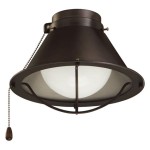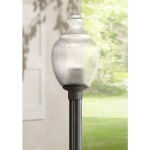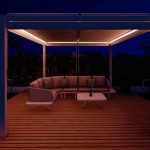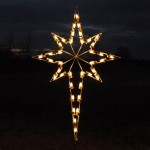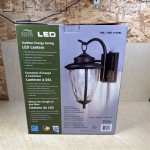Outdoor Dining Area Lighting Designs For Kitchens
The integration of outdoor dining areas with kitchens has become a popular trend in modern home design, fostering a seamless transition between indoor and outdoor living spaces. Central to the success of these outdoor spaces is the lighting design, which must be both functional and aesthetically pleasing. Carefully considered lighting can enhance the ambiance, extend the usability of the outdoor area into the evening hours, and create a welcoming environment for family and guests. This article will explore various lighting designs suitable for outdoor dining areas connected to kitchens, focusing on key considerations for optimal performance and aesthetic appeal.
The primary goal of outdoor dining area lighting is to provide adequate illumination for food preparation, dining, and social interaction. The lighting scheme should also complement the overall design of the kitchen and outdoor space, creating a harmonious and cohesive look. Effective outdoor lighting design involves understanding different lighting types, placement strategies, and control systems to achieve the desired effect.
Understanding Lighting Types and Their Applications
Selecting the appropriate type of lighting fixture is the first step in designing an effective outdoor dining area lighting scheme. Different lighting types offer varying levels of brightness, color temperature, and energy efficiency, ultimately influencing the atmosphere and functionality of the space. Common options include ambient lighting, task lighting, and accent lighting.
Ambient lighting, also known as general lighting, provides overall illumination for the entire area. Its purpose is to create a base level of light that allows people to move around safely and comfortably. Options for ambient lighting in outdoor dining areas include string lights, hanging lanterns, and recessed lights. String lights, often featuring Edison bulbs or LEDs, can create a festive and inviting atmosphere. They are relatively easy to install and can be strung across pergolas, trees, or fences. Hanging lanterns offer a more formal and sophisticated look, and can be suspended from the ceiling of a covered patio or pergola. Recessed lights, installed in the overhang of a roof or pergola, provide a clean and unobtrusive source of ambient light.
Task lighting focuses on illuminating specific areas for specific activities, such as food preparation on an outdoor grill or reading at the dining table. The illumination level should be sufficient to allow for comfortable and safe execution of the task without causing glare or shadows. Popular options for task lighting in outdoor kitchen and dining areas include spotlights, pendant lights, and under-cabinet lighting. Spotlights can be used to highlight specific features, such as a grill or food preparation area. Pendant lights, hung above the dining table, provide focused illumination for dining. Under-cabinet lighting, installed beneath kitchen cabinets or countertops, provides direct light for food preparation and clean-up.
Accent lighting is used to highlight architectural features, landscaping elements, or decorative objects. It adds visual interest and depth to the outdoor space. Accent lighting techniques include uplighting, downlighting, and spotlighting. Uplighting involves directing light upwards onto trees, shrubs, or architectural details, creating dramatic shadows and silhouettes. Downlighting involves directing light downwards from trees, pergolas, or eaves, creating pools of light on the ground or highlighting specific areas. Spotlighting, as mentioned earlier, can also be used for accent purposes to draw attention to specific features such as sculptures or water features.
Beyond the type of lighting, the choice of light source is crucial. LED (light-emitting diode) lighting has become the dominant technology in outdoor lighting due to its energy efficiency, long lifespan, and versatility. LED lights consume significantly less energy than traditional incandescent or halogen bulbs and can last for tens of thousands of hours, reducing the need for frequent replacements. They are also available in a wide range of color temperatures, allowing for customization of the ambiance. Other options include halogen and incandescent bulbs, but these are less energy-efficient and have shorter lifespans. Solar-powered lights are also an option for ambient or accent lighting, but their performance can be inconsistent depending on the amount of sunlight they receive.
Placement and Positioning of Lighting Fixtures
Effective placement and positioning of lighting fixtures are essential for achieving optimal illumination and minimizing glare. A well-planned lighting layout considers the layout of the outdoor dining area, the location of the kitchen, and the intended use of the space. The positioning of lights should consider safety, functionality, and aesthetics.
When positioning ambient lighting, it is important to distribute the light evenly across the entire area to avoid creating dark spots or areas of excessive brightness. String lights should be strung at a height that allows for comfortable passage underneath. Hanging lanterns should be hung at a height that provides adequate clearance and does not obstruct views. Recessed lights should be spaced evenly to provide consistent illumination.
Task lighting should be positioned to provide direct illumination to the specific areas where it is needed. Spotlights should be aimed at the target area without causing glare in the eyes of people using the space. Pendant lights should be hung at a height that provides adequate illumination for dining without obstructing conversation. Under-cabinet lighting should be installed close to the underside of the cabinets to maximize its effectiveness.
Accent lighting should be positioned to highlight the desired feature without creating excessive shadows or glare. Uplights should be placed at the base of trees or architectural features and directed upwards. Downlights should be positioned to create pools of light on the ground or to highlight specific areas. Avoid aiming accent lights directly at windows or doorways, as this can create unwanted glare and light pollution. Consider the viewing angle when positioning accent lights to ensure that the highlighted feature is visible from the desired perspective.
In addition to the positioning of the lighting fixtures, the direction of the light is also important. Adjustable fixtures allow for fine-tuning the direction of the light to achieve the desired effect. Consider the impact of the light on surrounding surfaces and structures. Light reflecting off walls or ceilings can create a brighter and more spacious feel, while light directed onto dark surfaces can create a more intimate and cozy atmosphere. It is also crucial to consider the effect of light spillover onto neighboring properties and take steps to minimize light pollution, such as using shielded fixtures or directing light downwards.
Control Systems and Smart Lighting Technology
Modern control systems and smart lighting technology offer a range of options for customizing and automating outdoor dining area lighting. Dimmers, timers, and motion sensors can enhance the usability and energy efficiency of the lighting system. Smart lighting systems allow for remote control of the lights through a smartphone or tablet, enabling users to adjust the brightness, color temperature, and timing of the lights from anywhere.
Dimmers allow users to adjust the brightness of the lights to create the desired ambiance. They are particularly useful for ambient lighting and task lighting, allowing for fine-tuning the illumination level to suit different activities and moods. Dimmers can also help to reduce energy consumption by lowering the brightness of the lights when full illumination is not needed.
Timers can be used to automatically turn the lights on and off at pre-set times, such as dusk and dawn. This is particularly useful for security lighting or for creating the impression that someone is home when the property is unoccupied. Timers can also help to conserve energy by ensuring that the lights are not left on unnecessarily.
Motion sensors can be used to trigger lights when movement is detected, such as when someone approaches the outdoor dining area. This is particularly useful for security lighting or for providing pathway lighting. Motion sensors can also help to conserve energy by ensuring that the lights are only turned on when they are needed.
Smart lighting systems offer a range of advanced features, such as the ability to control the lights remotely, create custom lighting scenes, and integrate with other smart home devices. Users can adjust the brightness, color temperature, and timing of the lights from their smartphone or tablet, even when they are not at home. Custom lighting scenes can be created to suit different activities and moods, such as a bright setting for food preparation or a dim setting for dining. Smart lighting systems can also be integrated with other smart home devices, such as security cameras or audio systems, to create a seamless and automated living experience.
In addition to these features, many smart lighting systems offer energy monitoring capabilities, allowing users to track their energy consumption and identify areas where they can save energy. They also offer voice control integration with popular virtual assistants, such as Amazon Alexa and Google Assistant, allowing users to control the lights with their voice. The integration of these control systems and smart lighting technologies enhances the functionality, energy efficiency, and convenience of outdoor dining area lighting, creating a more enjoyable and sustainable outdoor living experience.

8 Outdoor Kitchen Lighting Ideas Angi

Outdoor Kitchen Design Lanchester Grill Hearth

Top 6 Backyard Lighting Trends That Last

Top 4 Lighting Design Tips For Patios And Decks Landscape Pro

8 Backyard Lighting Ideas For A Serious Outdoor Glow Up

Stretch Your Time Outdoors On A Deck Or Patio Add After Dark Drama To Home S Front Entry With Mix Of Outdoor Lights Choose From Garden And String

64 Outdoor Kitchen Design Ideas For A Gastronomic Paradise

27 Smart Ways To Illuminate An Outdoor Space Digsdigs

21 Best Outdoor Lighting Ideas Easy Patio

Al Fresco Kitchens Dining Kitchenvisions
Related Posts

